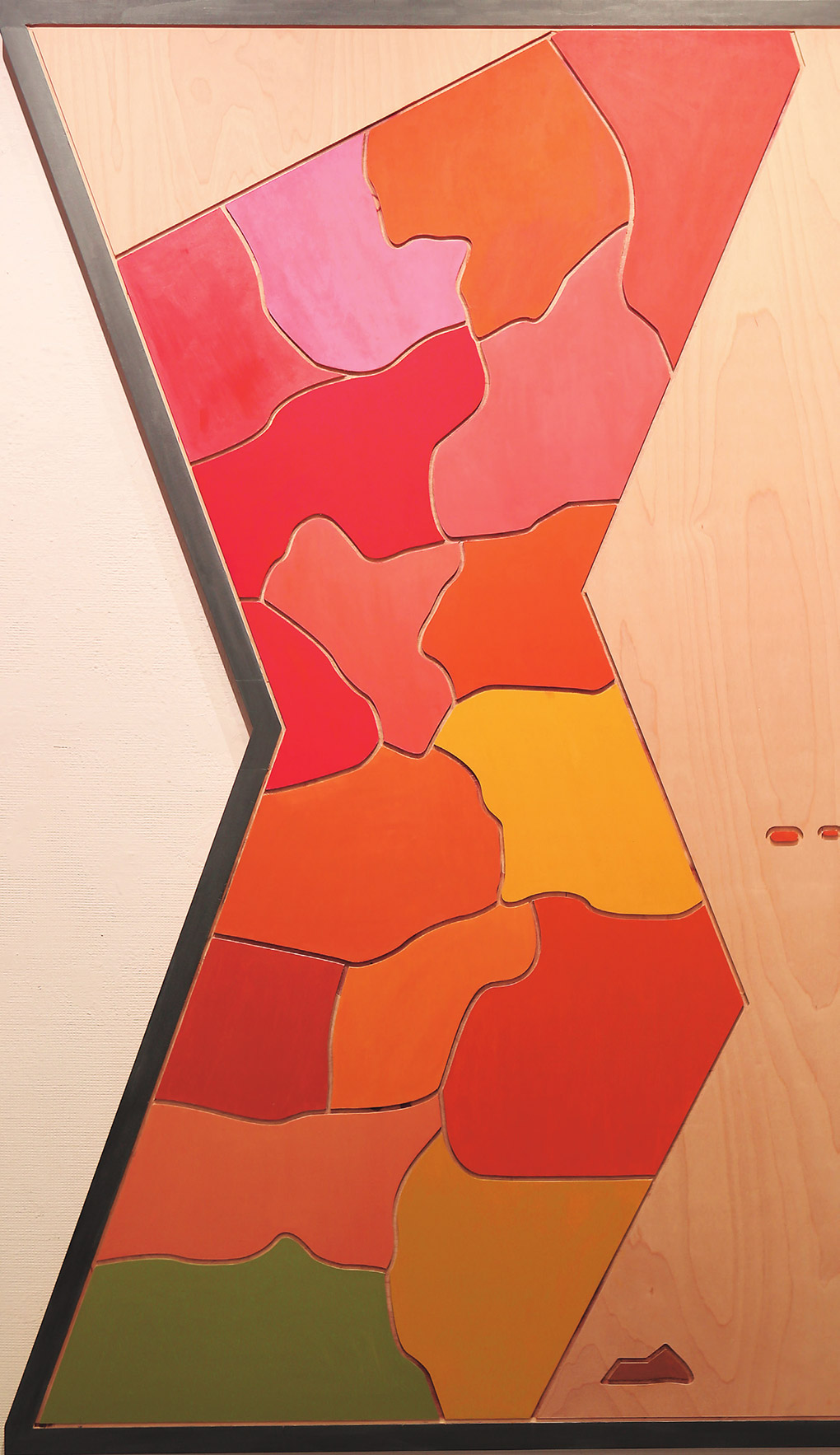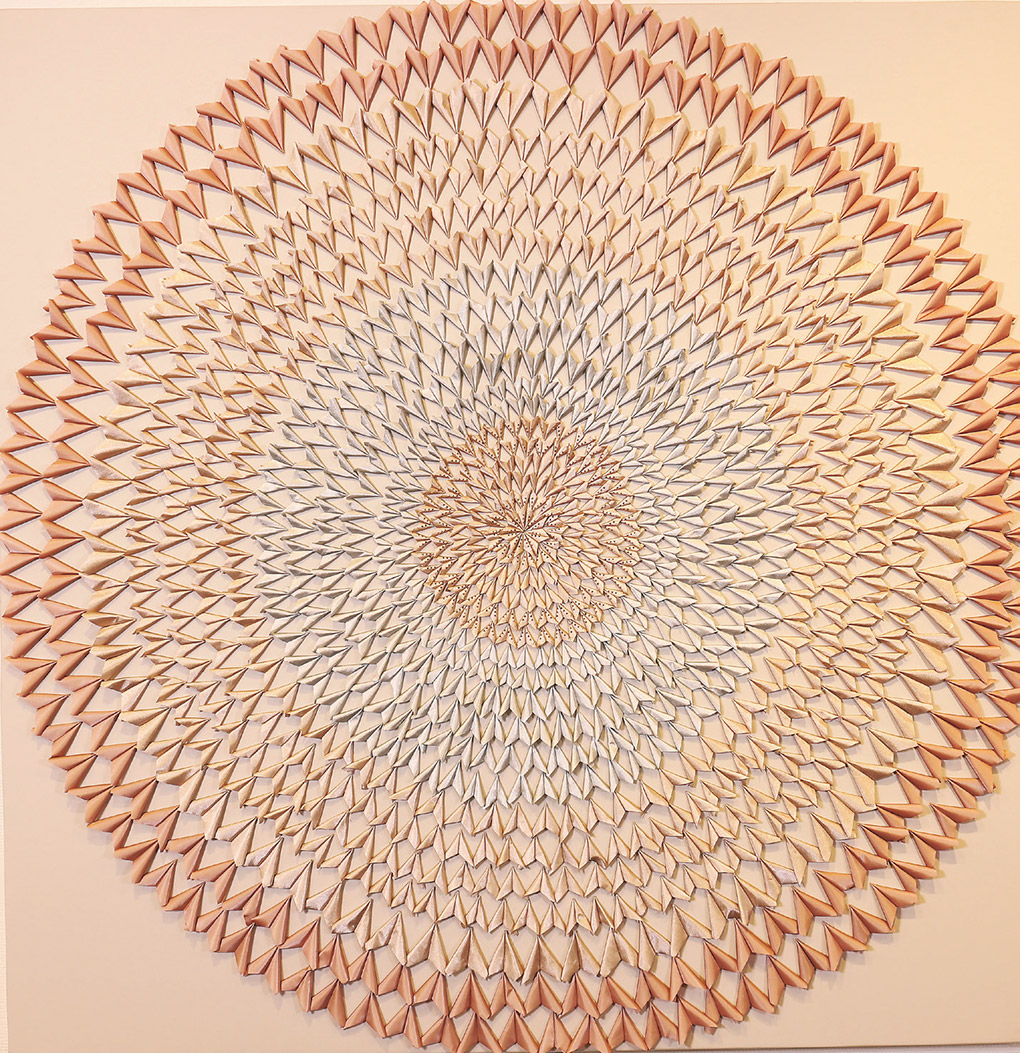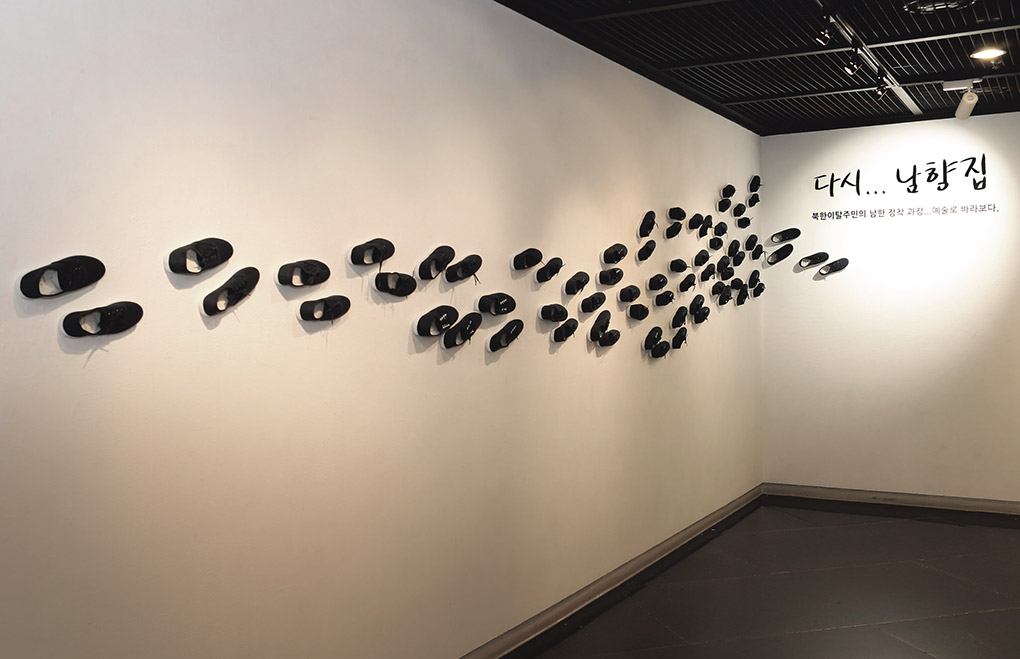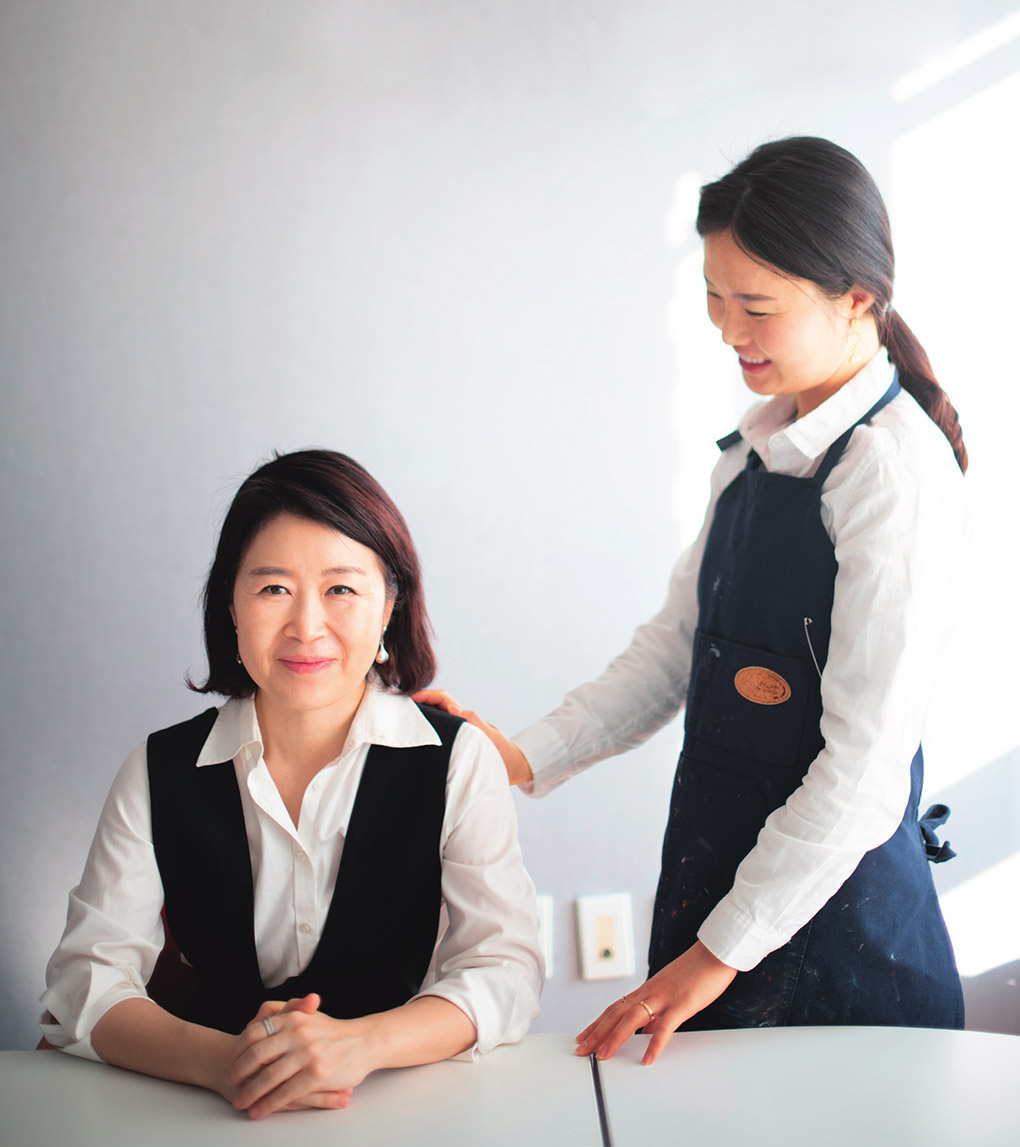“A South-Facing House, Again” – an art exhibition by a North Korean refugee and her South Korean mentor/art therapist – attracted many viewers near the end of 2020. It highlighted efforts toward mutual understanding between North and South Koreans, and their shared desire for unification.
North Korean refugee “Koi” named herself after the colorful carp to mask her identity and express her newly-acquired freedom. Koi in a fishbowl rarely surpass eight centimeters in length, but those in a river can grow up to 15 times bigger. The young artist likens herself to a fishbowl variety that has now reached the “wide and free river” of South Korea.
In December 2008, Koi left her home in Chongjin, North Hamgyong Province, and sneaked into China, motivated by a close friend and her family members who had settled in South Korea. She couldn’t be deterred even by her own family’s warnings of severe punishment should she be captured.
After many twists and turns in China and Thailand, Koi arrived in South Korea, her “dream land,” in March 2009. She personified an old adage that says, “The newborn calf is not afraid of the tiger.” Today, she fully realizes the risks she took as a new, 18-year-old high school graduate. She says she would not attempt the journey now if she were still in the North.
Upon arriving, Koi set her sights on a fine arts education in Seoul. To prepare for the college entrance exam, she attended Heavenly Dream School, a private alternative school for displaced North Koreans in Seongnam, Gyeonggi Province. In 2012, Koi was admitted to Hongik University’s Department of Textile Art and Fashion Design. She was the department’s first student from North Korea.

“A Map of the Korean Peninsula Embraced by Sigma” Shin Hyung-mee and Koi. 2020. Acrylic painting on wood. 160 × 100 cm.
A collaboration by Koi, a North Korean refugee, and Shin Hyung-mee, her South Korean mentor/art therapist, displayed at their joint exhibition, “A South-Facing House, Again,” held in Seoul in November 2020. It employs the mathematical symbol (sigma) to express the whole of all parts.

“Unit Harmony” Koi. 2020. Special fabric. 100 × 100 cm.
This solo piece by Koi expresses her belief that many wishes for unification will eventually build one Korea. The artist says she was inspired by paper airplanes carrying notes of wellwishes.
Coincidence or Karma
While at the university, Koi met Shin Hyungmee, an art therapist, through the Young Defectors’ Christian Association. “When I first met Koi in 2013, I immediately felt that she had a very bright and positive view of life,” Shin recalls. At the time, I was participating in group counseling for young refugees, supported by the Korean Methodist Church headquarters. I knew that Koi eagerly wanted me to teach her privately. I’ve been her mentor ever since.”
The two artists created nine works for a joint exhibition held in Seoul from November 25 to November 30, 2020. The theme of the event was “national unification.” It was the second round of “A South-Facing House,” an exhibition series launched in 2008 by Seoul Women’s University and the Incheon Dongbu Office of Education as an art therapy project for young refugees. The series has showcased participants’ artistic talents in a variety of genres, including painting, textile art and installation. The 2020 edition was hosted by the Unification Ministry at Topohaus, a gallery in Insa-dong, an arts and crafts conclave in central Seoul.
The exhibition introduced Koi and her special relationship with Shin to the broader art scene. They collaborated on three of the artworks and separately produced three works each.
“A Map of the Korean Peninsula Embraced by Sigma,” one of the joint pieces, expressed the artists’ impression of Korea through the mathematical symbol denoting a sum. In an earlier project called “Communicate with Colors,” 30 refugees and 29 South Koreans came together, each creating a different color of paint based on their own view of national unification. These hues were supplemented by a “color of emotion” made by Shin and Koi. Thus, 101 colors were exhibited and later handed over to institutions involved with education for national unification.
“The Road to a SouthFacing House I Walk with You On,” one of Koi’s individual works, was an installation piece. It evoked 50 pairs of the sneakers that she wore back in the North.
“I put a handwritten letter in each pair of shoes to say hello to 50 friends of mine in the North. The letters reflect my longing for my family and friends, and my wish for national unification,” she explains. “Many visitors lingered in front of the work. Some of them read each letter carefully and shed tears. Others left notes to say they were very touched.”
“Unit Harmony,” another piece by Koi, was crafted based on her inspiration from paper airplanes carrying notes of well-wishes.
Each of the “units” stands for a different dream. It embodies the image of one Korea built on many wishes for unification, just as all these smaller dreams together make up a bigger dream.
Consideration and Patience
“Long-Distance Running Track,” a solo piece by Shin, depicted the long and rough journey taken by 46 individuals from among the many North Korean refugees whom she still remembers meeting as an art therapist.
“Ever since I was a child, long-distance running has been difficult for me,” Shin says.
“I wanted to compare North Korean escapees’ experiences of both dangerous moments and peaceful relief along their journey toward South Korea with how runners feel during a long-distance race.”
Despite their special relationship as a mentor and a mentee, as they worked together, Shin and Koi were constantly reminded of their different values, outgrowths of the disparate environments and experiences they have had. Communication, consideration and patience were critical. They thought hard about how to integrate their two different cultures.
Koi says she was encouraged by the sheer number of visitors to the exhibition. “I had anticipated that there would be only a small number of visitors due to COVID-19, but was surprised to find out that more people came than expected. I was convinced that my talent could be used for national unification. More importantly, two artists from the South and the North were able to engage in collaborative activities rather than doing something separately. We’ve already gotten off to a good start toward national unification, I believe.”
The exhibition was initiated by Shin. “We prepared it not as a one-off event, but as a long-running program,” she says. “With this serving as momentum, we’ll play the role of a bridge so that it can develop into a bigger project and more people can take part in it, approaching the topic of North Korea in a natural manner with optimism about unification.”
Another exhibition is scheduled for later this year at a gallery run by the National Unification Advisory Council.
“More importantly, two artists from the South and the North were able to engage in collaborative activities rather than doing something separately. We’ve already gotten off to a good start toward national unification, I believe.”

. “The Road to a South-Facing House I Walk with You On” Koi. 2020. Fabric, handwriting, installation of 50 pairs of sneakers.
Each of the 50 pairs of sneakers, the same type as those Koi wore in North Korea, includes a letter she wrote to say hello to her friends in the North.

When art therapist Shin Hyung-mee (left) and Koi, her mentee from North Korea, work together, their different values often surface. They find communication, consideration and patience to be critical to their collaboration.
Steps toward a Dream
Currently, Koi is studying for a master’s degree in fashion business at Hongik University and working for a fashion-related organization. In 2016, she planned and participated in a group exhibition by nine young North and South Korean artists at Common Ground, South Korea’s first shopping mall made of shipping containers, under the sponsorship of Kolon Group. Her dream is to become an influential expert in the fashion industry and the world of arts and culture so that she’ll be able to play a useful role in uniting the two Koreas.
Shin has maintained a close relationship with refugees since 2004. It all began when she met a boy from North Korea while working as a volunteer for Doctors Without Borders. As an art therapist, she also facilitated defectors’ mental healing and communicated with them at Hanawon, a government facility for defector re-education. She studied fine arts at Ohio University in the United States and obtained her master’s degree in art therapy from Seoul Women’s University Graduate School.
Now, Shin is undertaking a doctoral program on clinical art therapy at CHA University. She is also preparing for various activities designed to raise awareness of the important public task of helping displaced North Koreans live a fulfilling life in the South.